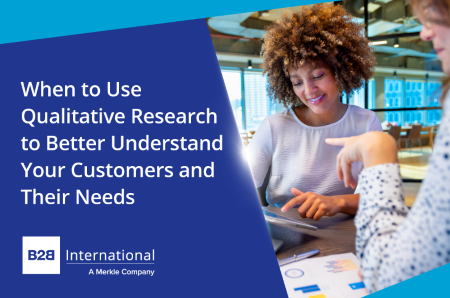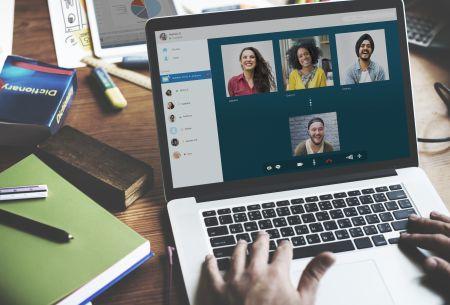
Focus groups are an extremely valuable method of qualitative data collection, which generate rich, qualitative data through open-ended questions and interactive discussions. They usually involve a moderator leading a discussion with a small group (ideally 6-8 individuals) to understand their views and opinions on a particular topic product, service, or idea.
They are different from other qualitative data collection methods (such as in-depth interviews, diary studies etc.) in that their purpose is to generate data through interaction and discussion between group participants – participants have the opportunity to share their own views and experiences, listen to those of others, reflect on their own standpoint and consider this further.
Focus groups have traditionally been conducted in face-to-face environments. Over time, the modality has evolved to include online environments – starting with online forums and discussion boards, and more recently, online groups using video conferencing software (i.e. MS Teams, Zoom) which mimic the face-to-face environment.
Each approach has its own unique benefits and drawbacks, and it is important to consider the research objectives before deciding on whether an in-person or remote focus group will yield the desired outcomes.
Before considering the pros and cons of each approach, it is worth clarifying the nature of group processes and the stages involved in group discussions. By understanding the processes and dynamics of group discussions, we can better envisage how these dynamics would play out in a face-to-face or a virtual environment and help us decide which method would best suit our research objectives.
The stages observed in group discussions
The psychologist Bruce Tuckman identified five stages that are commonly observed when a group of people come together to discuss or work through a particular topic, and these phases comprise: forming, storming, norming, performing and adjourning.
Before briefly summarizing each stage, it’s important to note that the researcher’s goal is to guide the group to reach a productive (‘performing’) stage, where the group works with greater synergy, tackling more challenging topics and yielding greater depths of insight. It is important to consider what are the drivers and blockers of reaching this stage in a virtual environment, versus a face-to-face environment.
-
Forming: in this phase, individuals have not yet relaxed into the group situation and may be preoccupied about their acceptance into the group. Individuals will engage more with the group moderator in this phase and are less likely to engage with other participants.
-
Storming: this is a period of tension where some individuals may adopt particular roles, some may attempt to exert their dominance or expertise, while others may respond with silence or aloofness.
-
Norming: a calmer phase often follows, where the group norms are established and participants begin to work cooperatively and some may seek common ground, agreeing with others and reinforcing what they say. It is this stage where social norms will influence individuals and may express normative and socially acceptable views – which are important for the moderator to revisit later in the discussion as individuals become more relaxed in the group environment.
-
Performing: during this stage the group will work more interactively and more openly discuss the research topics. The group will have relaxed and individuals are less guarded by this stage, allowing greater levels of agreement and disagreement between group members. This is the most productive phase of the group, where the group works with greater synergy, tackling more challenging topics and yielding greater depths of insight. Some groups do not reach this stage despite the researcher’s best efforts, and it is important to consider how the format of the group can facilitate or inhibit the group discussion reaching this point.
-
Adjourning: the final phase often sees the group consolidating and sometimes reinforcing their earlier points, as the group draws to a close. Participants are given the opportunity to share any final thoughts they have, reflecting on the discussion overall.
Understanding this view of the stages of a focus group discussion helps us consider which modality of group would yield the most insight and help us achieve our research objectives. Of course, there are distinct benefits to each approach, whether face-to-face or online, which also warrant consideration when deciding on the most suitable approach.

Benefits of face-to-face focus groups
Enhanced engagement, dynamics and rapport building
Arguably, a face-to-face environment more closely mirrors a natural social setting where the physical presence of participants aids spontaneity and encourages debates which reveal more about participants’ opinions and motivations. Building rapport comes more naturally in person, and distractions tend to be less prevalent in face-to-face settings, helping participants to focus and engage in the discussion. It is also worth adding that the greater energy involved in face-to-face discussions is a core benefit and avoids online group fatigue – where having a discussion in an online environment can result in the participant experiencing high cognitive load, having limited interactions with other participants and potentially dropping out from the group.
Greater spontaneity and opportunity to observe non-verbal communication
Spontaneous reactions that can lead to unexpected insights are more likely in a physical setting. While non-verbal cues can be more easily observed by the researcher – such as demonstrating agreement by nodding or shaking head and the emphasis and gesticulation used when discussing specific topics. It also works from the researcher’s perspective, who is able to look around the room and gesture to participants. The researcher can interpret body language as an indication of the participant’s engagement – the researcher can see who is trying to interject, who looks confused, who seems bored – and find a way to engage them in the discussion.
Physical interaction with stimuli
Physical materials and stimulus can be interacted with in-person, making face-to-face groups a good choice for approaches involving product and concept testing, projective techniques requiring materials (i.e. drawing exercises) and role-playing.
Benefits of online groups
Not limited by geographical proximity
Online groups are particularly useful where time-pressed or geographically dispersed populations mean that it would be difficult to bring a group together physically or if there was a reason that a physical group might somehow inhibit people’s ability to openly articulate their views. These groups offer a convenient option with participant’s able to join from anywhere, meaning better chances of good participation rates.
Cost and time efficiencies
While face-to-face groups incur charges for viewing room hire, travel and other logistical arrangements, remote groups are often much more cost-effective. With no requirement to travel to the focus group, or coordinate face-to-face meeting spaces, online focus groups can be organized more quickly and efficiently.
Technological efficiencies
Today’s online focus group platforms allow the researcher to mimic a face-to-face group by providing the opportunity for participants to discuss topics/work together in smaller groups in online break-out rooms. They also allow the use of the chat function to informally share views, online polls and mentimeters, and screen sharing which allows the presentation of online stimulus. Each of these helps to engagement and build on the depth of interaction and discussion. Remote focus groups also have the benefit of built in recording and transcribing – increasing efficiencies in capturing the data for analysis.
Reduced environmental impact
With no travel involved, remote focus groups reduce the carbon footprint of the activity – contributing to more sustainable research approaches.
Conclusion
It is clear there are distinct benefits for each approach when it comes to conducting focus groups either face-to-face or online. In my view, the social context of the face-to-face focus group better allows the researcher to observe the development of ideas and how this is shaped through discussion with other participants. I would argue that the face-to-face approach is better suited to facilitating a more dynamic, interactive and engaged group and would be my mode of choice for any research incorporating focus groups.
Of course, the convenience and greater speed of conducting online focus groups makes this choice attractive – in which case the researcher might consider a hybrid approach such as conducting a proportion of face-to-face focus groups with core audiences and a proportion of online focus groups with supporting audiences (i.e. in relation to the target audience) – to achieve the best of both worlds.
Readers of this article also viewed:
A Best Practice Guide to Assessing CX in B2B Markets Ethnography In B2B Markets: A Guide On What, When And How A Guide to Digital Ethnography in B2B Market Research 3 Top Tips for Running Effective Online Focus Groups 6 Critical Success Factors for Qualitative Research A Guide to Projective Techniques in B2B Market Research A Mixed Methods Approach to Market Research: Benefits and Considerations 6 Critical Success Factors for Qualitative Research
To discuss how our tailored insights programs can help solve your specific business challenges, get in touch and one of the team will be happy to help.




